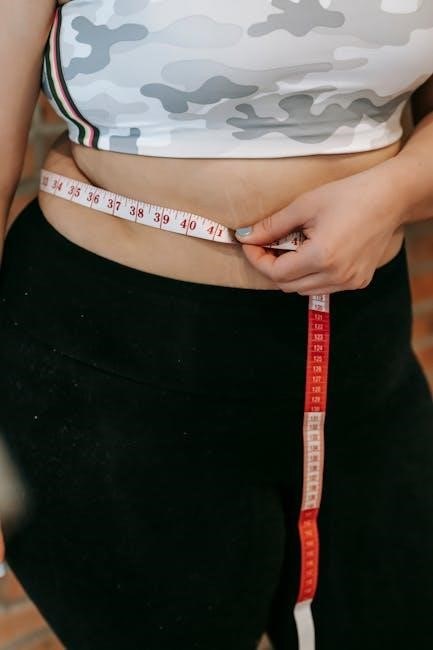Roxy Wetsuit Size Guide: A Comprehensive Overview
Embark on your aquatic adventures perfectly equipped with our comprehensive guide to Roxy wetsuit sizing. This essential resource ensures you select the ideal fit for unparalleled comfort and performance. Understanding Roxy’s specific measurements leads to enhanced experiences.
Roxy, born from Quiksilver in 1990, stands as a beacon of women’s boardsports, offering products infused with daring, confident, and naturally beautiful spirit. Roxy wetsuits, designed specifically for women, combine fashion with function, providing the perfect blend of warmth, flexibility, and style. These wetsuits offer features like GBS seams for durability and FN Lite neoprene for optimal performance.
Roxy wetsuits are more than just gear; they are a statement of an active lifestyle, enabling women to confidently navigate the waves. Whether you’re surfing, diving, or enjoying other water sports, Roxy wetsuits ensure comfort and peak performance. With a focus on fit and design, Roxy continues to inspire women to embrace their adventurous spirit.
Why Proper Wetsuit Sizing Matters
Proper wetsuit sizing is crucial for maximizing warmth, flexibility, and comfort, directly impacting your performance and overall experience in the water. A well-fitted wetsuit acts as a second skin, ensuring maximum thermal regulation by minimizing water entry, thus keeping you warmer for longer periods.
Conversely, an ill-fitting wetsuit can lead to discomfort and restricted movement, hindering your ability to perform effectively. A wetsuit that’s too large allows excessive water to flush through, negating its warming capabilities, while one that’s too tight can limit your range of motion and cause fatigue. Therefore, understanding and utilizing the Roxy Wetsuit Size Chart is essential for achieving the perfect fit.

Understanding Roxy Wetsuit Size Charts
Navigating the Roxy wetsuit size charts is key to finding your ideal fit. These charts provide crucial measurements, ensuring comfort and optimal performance in the water, by offering the measurements.
Women’s Wetsuit Size Chart: Key Measurements
The Roxy women’s wetsuit size chart is a vital tool for selecting the perfect fit, ensuring comfort and performance in the water. This chart primarily focuses on key body measurements: height, weight, chest, waist, and hips. Understanding these measurements is essential for choosing a wetsuit that allows for unrestricted movement while maintaining optimal warmth.
Height and weight provide a general starting point, while chest, waist, and hip measurements offer more precise sizing information. These measurements ensure the wetsuit fits snugly without being too restrictive. A well-fitted wetsuit should feel like a second skin, allowing for a full range of motion while minimizing water entry.
Consulting the Roxy women’s wetsuit size chart before making a purchase helps avoid ill-fitting suits that can hinder performance and comfort. Accurate measurements paired with the size chart guarantee an enjoyable and effective water sports experience. By paying close attention to these key measurements, you can confidently select a Roxy wetsuit.
Girls’ Wetsuit Size Chart: Finding the Right Fit
Finding the right fit for a girl’s wetsuit is crucial for comfort and performance in the water. The Roxy girls’ wetsuit size chart provides essential measurements to ensure an optimal fit. Key measurements include height, weight, chest, and waist. These measurements help determine the correct size, allowing for freedom of movement while keeping the child warm.
When using the size chart, start with height and weight to find a general size range. Then, use chest and waist measurements for a more precise fit. A wetsuit that is too tight can restrict movement, while one that is too loose will allow water to enter, reducing its effectiveness.
Roxy’s girls’ wetsuit size chart ensures that young surfers and swimmers can enjoy their water activities comfortably. Remember to measure accurately and consult the chart before purchasing to guarantee the best possible fit, enabling them to focus on fun and performance. Accurate sizing ensures a comfortable and effective wetsuit experience.
Interpreting Size Charts: Height, Weight, Chest, Waist, Hips
Interpreting Roxy’s wetsuit size charts requires understanding how height, weight, chest, waist, and hip measurements correlate to the appropriate size. Height is often the primary indicator, providing a general size range. Weight helps to refine this selection, ensuring the wetsuit isn’t too tight or loose based on body mass.
Chest measurements are crucial for women’s wetsuits, ensuring a comfortable fit around the bust. Waist measurements determine how well the wetsuit fits around the torso, preventing water from flushing through. Hip measurements are essential for overall comfort and mobility, especially in the lower body.
To accurately interpret the size chart, cross-reference all these measurements. If your measurements fall between sizes, consider the wetsuit’s intended use. For performance-oriented activities, a snug fit is preferable. For recreational use, a slightly looser fit might be more comfortable. Always prioritize the most critical measurements for your body type to achieve optimal comfort and performance.

Measuring Yourself for a Roxy Wetsuit
Accurate self-measurement is key to finding the perfect Roxy wetsuit. Follow our guide to learn the proper techniques for obtaining precise body measurements, ensuring a comfortable and high-performing fit for your watersports.
Accurate Body Measurement Techniques
To guarantee an optimal fit with your Roxy wetsuit, mastering accurate body measurement techniques is paramount. Start by using a flexible measuring tape and standing in front of a mirror to ensure correct placement. For the chest, measure around the fullest part, keeping the tape level and snug, but not too tight.
Next, find your natural waistline and measure around it, ensuring the tape remains parallel to the floor. Measure your hips at the fullest point, usually around the seat. Accurate height and weight are also crucial, so use a reliable scale and measure your height against a wall.
Record each measurement carefully and compare them to the Roxy size chart. If you’re between sizes, consider the wetsuit’s intended use and your personal preference for a tighter or looser fit. Remember, precise measurements lead to a wetsuit that maximizes comfort and performance in the water. Don’t rush this process!
Converting Measurements to Roxy Sizes
Once you’ve meticulously taken your body measurements, the next step is converting them accurately to Roxy wetsuit sizes. Locate the official Roxy size chart, typically found on their website or authorized retailer sites. The chart will list sizes alongside corresponding measurements for height, weight, chest, waist, and hips.
Carefully compare your recorded measurements to the chart. If your measurements fall into different size categories, prioritize the chest measurement for the best fit, as this is crucial for flexibility and comfort. If you’re between sizes, consider whether you prefer a tighter, performance-oriented fit or a more relaxed feel.
Keep in mind that wetsuit thickness can also influence sizing; thicker suits may require a slightly larger size. When in doubt, consult customer reviews or seek advice from wetsuit experts to ensure the most accurate conversion and a wetsuit that performs optimally.

Tips for Choosing the Right Size
Selecting the right wetsuit size ensures maximum warmth, flexibility, and comfort. Confirm your measurements with Roxy’s sizing chart. Think of a wetsuit as a second skin, so it should fit snugly.
Considering Wetsuit Thickness and Water Temperature
Choosing the appropriate wetsuit thickness, influenced by water temperature, is paramount for comfort and performance. Warmer waters necessitate thinner suits, promoting flexibility. Colder conditions require thicker neoprene, maximizing insulation. Roxy offers diverse thicknesses tailored to varying environments.
Consider a 3/2mm wetsuit for moderate climates, balancing warmth and maneuverability. For colder waters, a 4/3mm or 5/4mm suit offers superior protection against the chill. Always consult temperature guides to align thickness with your local conditions.
Remember, personal cold tolerance also plays a crucial role. Factors like wind chill and activity level further influence optimal thickness selection. Layering options, such as rash guards, can augment warmth in transitional conditions. Selecting the right thickness ensures extended comfort, allowing you to fully enjoy your water activities. Proper wetsuit care prolongs its lifespan.
When to Consult a Wetsuit Expert
Navigating the complexities of wetsuit selection can be daunting, highlighting the value of expert consultation. If you find yourself uncertain about sizing, thickness, or specific features, seeking guidance is highly recommended. Wetsuit experts possess specialized knowledge to address your individual needs.
They can accurately assess your measurements, considering nuances that generic size charts may overlook. Experts also understand the variations in fit among different Roxy models. They can provide tailored recommendations based on your intended activities and typical water conditions.
Moreover, a wetsuit expert can offer insights into the latest technologies and materials. They can explain the benefits of different seam constructions and closures. Consulting an expert ensures you invest in a wetsuit that maximizes comfort, performance, and longevity, preventing costly mistakes. Their expertise will save time.

Where to Find Roxy Wetsuit Size Charts
Locate Roxy wetsuit size charts easily through official channels like Roxy’s website and authorized retailers. Additionally, surf shops and online resources often provide sizing guides for informed purchasing decisions, guaranteeing the perfect fit.
Official Roxy Website and Retailers
The most reliable source for Roxy wetsuit size charts is undoubtedly the official Roxy website. Here, you’ll find up-to-date information directly from the manufacturer, ensuring accuracy and minimizing the risk of errors. The site typically includes detailed size charts for women’s and girls’ wetsuits, encompassing various measurements like height, weight, chest, waist, and hips.
Beyond the official website, authorized Roxy retailers are another excellent resource. These retailers, whether brick-and-mortar stores or online marketplaces, often provide the same size charts as Roxy, along with expert advice from knowledgeable staff. Visiting a physical store allows you to try on wetsuits and get personalized fitting assistance.
When consulting retailers, verify their authorization status to ensure the information’s reliability. Official retailers are committed to providing accurate sizing guidance to align with Roxy’s standards. This dual approach – utilizing both the official website and trusted retailers – offers a comprehensive strategy for locating the right size chart for your Roxy wetsuit needs. Remember to cross-reference information for maximum confidence.
Third-Party Surf Shops and Online Resources
Beyond official Roxy channels, third-party surf shops and online resources can offer valuable insights into Roxy wetsuit sizing. Many independent surf shops, both physical and online, curate size charts from various brands, including Roxy, to assist their customers. These shops often possess specialized knowledge of wetsuit fitting, providing helpful tips and recommendations based on experience.
However, exercise caution when relying solely on third-party sources. Always cross-reference the size charts with the official Roxy website to ensure accuracy. Variations may exist due to differing measurement techniques or outdated information.
Online forums and communities dedicated to surfing and water sports can also be valuable resources. Experienced Roxy wetsuit users frequently share their sizing experiences and offer advice to newcomers. While anecdotal evidence shouldn’t be the sole basis for your decision, it can provide valuable context and help you anticipate potential sizing challenges. Remember to critically evaluate information from unofficial sources.
